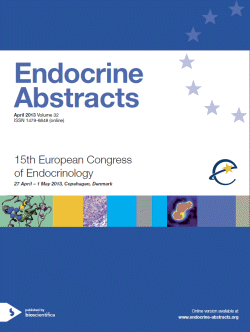Searchable abstracts of presentations at key conferences in endocrinology
Symposia
What's new in type 2 diabetes?
ea0032s6.1 | What's new in type 2 diabetes? | ECE2013
The impact of our genomes on metabolic health
For the past two decades, genetics has been widely explored as a tool for unravelling the pathogenesis of cardio-metabolic disorders. Many risk alleles for type 2 diabetes and hyperglycaemia have been detected in recent years through massive genome-wide association studies and evidence exists that most of these variants influence pancreatic β-cell function. Investigations of more detailed physiological phenotypes, are now emerging and give indications of more specific pat...
ea0032s6.2 | What's new in type 2 diabetes? | ECE2013
Insulin resistance and adipose tissue
Inability to store excess lipids in the subcutaneous adipose tissue leads to ectopic lipid deposition in several sites including the liver, skeletal muscles, intra-abdominal and pericardial depots. This, in turn, has negative consequences for degree of insulin sensitivity and the dysmetabolic state associated with insulin resistance and type 2 diabetes.Storage of fat in the adipose tissue can either lead to inappropriate cellular enlargement (hypertrophi...
ea0032s6.3 | What's new in type 2 diabetes? | ECE2013
Mechanisms of β cell failure in type 2 diabetes
Pancreatic β cell dysfunction and death are central in the pathogenesis of type 2 diabetes but the underlying mechanisms are not well understood. Genetic factors predispose to type 2 diabetes but, despite very large scale genome-wide association studies, the heritability of the disease remains largely unexplained. Environmental and lifestyle factors contribute to the pathogenesis of type 2 diabetes and likely explain its rapidly increasing prevalence. Elevated levels of s...




